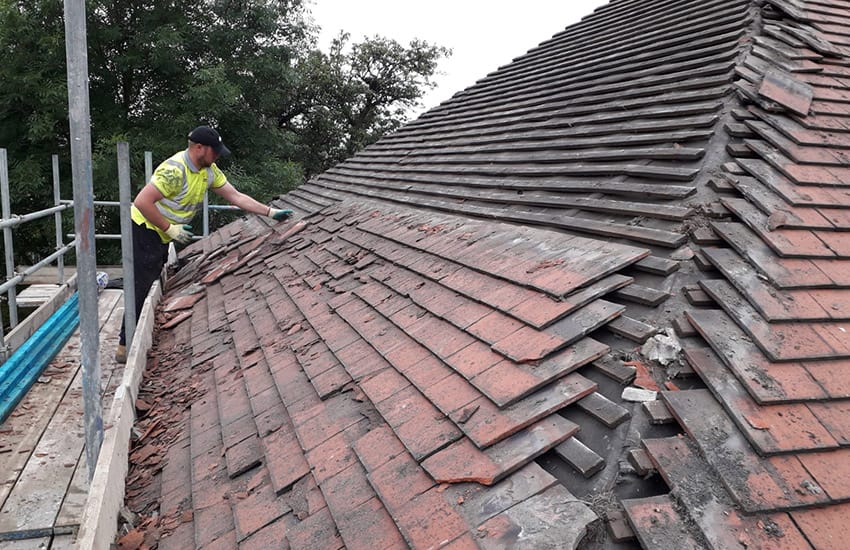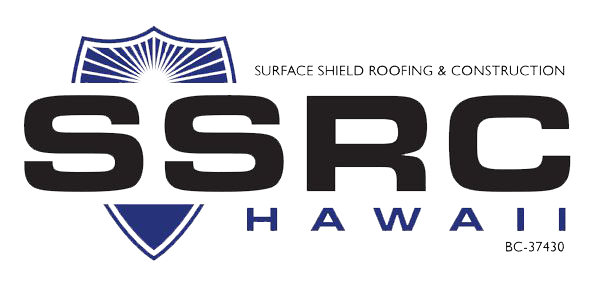Comprehending the Various Sorts Of Roof Coverings: A Comprehensive Overview for Homeowners
With a variety of alternatives-- ranging from the conventional gable to the contemporary level-- each kind presents distinct benefits and difficulties that should align with the homeowner's specific needs and environmental factors to consider. As we explore the complexities of various roofing system kinds, it ends up being noticeable that one size does not fit all; the ideal choice might stun you.
Saddleback Roof
Saddleback roofs, defined by their triangular form, are amongst the most popular roof covering styles due to their simplicity and efficiency in dropping water and snow. This design features 2 sloping sides that fulfill at a ridge, enabling effective water drainage and minimizing the danger of water buildup. The high pitch commonly related to saddleback roofs boosts their ability to manage heavy rainfall, making them suitable for numerous environments.
In enhancement to their functional benefits, gable roofs offer aesthetic adaptability. They can be adapted to various building designs, from conventional to modern homes. The layout can additionally fit additional functions such as dormer home windows, which improve natural light and ventilation in the attic room area.
In addition, gable roofing systems give sufficient room for insulation, contributing to power performance. Home owners can pick from a range of roof materials, including asphalt tiles, metal, and floor tiles, further boosting modification options.
Regardless of their advantages, gable roofs might need additional assistance in locations vulnerable to high winds or hefty snowfall. Generally, the gable roofing continues to be a preferred option due to its blend of functionality, sturdiness, and aesthetic allure.
Apartment Roofs
Level roof coverings are often recognized for their minimalist layout and practical applications, specifically in industrial and commercial settings (oahu roofing). These roofing systems feature a straight or nearly horizontal surface, which enables for very easy building and construction and flexible area application. While they may do not have the visual allure of pitched roofings, level roofing systems offer many benefits, particularly in city atmospheres where making best use of area is vital
Among the key benefits of level roofs is their access. Homeowners can make use of the roofing area for different objectives, such as rooftop gardens, terraces, or solar panel setups. Additionally, flat roofing systems are usually extra affordable to preserve and mount contrasted to their sloped counterparts, as they call for fewer products and labor.
Nevertheless, flat roofing systems do present specific obstacles. Appropriate drainage is important to prevent water pooling, which can result in leakages and architectural damage. Hence, selecting top notch waterproofing products and regular assessments are vital for guaranteeing long life. Common materials used for flat roof coverings include built-up roof (BUR), modified bitumen, and single-ply membrane layers, each offering distinctive advantages. Overall, flat roofings act as a versatile and practical selection for lots of home owners and services alike.
Hip Roofs
Hip roofing systems are defined by their sloped sides that merge at the top, developing a ridge. This style is distinctive from gable roofs, as all four sides of a hip roof covering slope downwards toward the wall surfaces, giving a more stable structure. The angle of the slopes can differ, enabling for versatility in building aesthetics and capability.
Among the primary benefits of hip roofings is their capacity to stand up to hefty winds and unfavorable weather problems. The sloped surface areas make it possible for much better water drain, decreasing the danger of leakages and water damage. Furthermore, hip roofs provide enhanced attic room, which can be utilized for storage space and even exchanged comfortable locations.
Nevertheless, building a hip roof covering can be much more complicated and expensive than easier roofing types, such as gable roofing systems. The extra product and labor included in developing the slopes and making sure appropriate structural integrity can result in greater expenses. In spite of these drawbacks, numerous house owners prefer hip roofs for their longevity, visual allure, and potential for power efficiency.
Mansard Roofing Systems
Mansard roofs, often recognized by their unique four-sided design, feature two inclines on each side, with the reduced slope being steeper than the upper. This building design, originating from France in the 17th century, is find out not just aesthetically enticing however useful, as it takes full advantage of the functional space in the top floorings of a structure. The high lower slope enables even more headroom, making it an ideal option for attic rooms or lofts, which can be converted right into living areas.
Mansard roofing systems are characterized by their convenience, accommodating various architectural designs, from standard to contemporary. They can be created with different products, consisting of asphalt tiles, slate, or steel, giving home owners with a series of choices to match their spending plans and preferences. In addition, the style enables the assimilation of dormer windows, improving all-natural light and ventilation in the top levels.
Nonetheless, it is important to take into consideration the potential drawbacks. Mansard roofings may call for even more upkeep due to the complexity of their layout, and their steep slopes can be challenging for snow and rain runoff. In general, mansard roof coverings integrate sophistication with usefulness, making them a popular option among house owners looking for unique architectural functions.
Lost Roofing Systems
As property owners progressively seek simpleness and functionality in their architectural designs, dropped roof coverings have actually arised as a prominent choice. Identified by a single sloping aircraft, a shed roofing offers a minimal visual that enhances various home styles, from modern to rustic.
One of the primary benefits of a shed roofing is its straightforward building and construction, which usually converts to lower labor and product costs. This style permits reliable water drainage, decreasing the risk of leaks and water damage. In addition, the vertical slope offers adequate room for skylights, improving natural light within the interior.
Lost roofings also offer versatility in terms of usage. They can be successfully integrated right into enhancements, garages, or outdoor frameworks like sheds and pavilions. Moreover, this roofing system style can fit different roof covering products, including steel, asphalt shingles, and even eco-friendly roofing systems, aligning with environment-friendly initiatives.
However, it is essential to think about regional environment conditions, as heavy snow loads may require adjustments to the roofing system's angle or framework. In general, lost roofing systems offer a useful and aesthetically pleasing option for homeowners aiming to take full advantage of functionality without jeopardizing design.
Conclusion


Gable roof coverings, characterized by their triangular shape, are amongst the most preferred roofing designs due to their simpleness and efficiency in losing water and snow. oahu roofing. The steep pitch frequently linked with gable roofing systems improves their capacity to handle hefty rainfall, making them suitable for various environments
While they may do not have the aesthetic charm of pitched roofs, level roofs provide numerous advantages, especially in city environments where maximizing room is critical.
